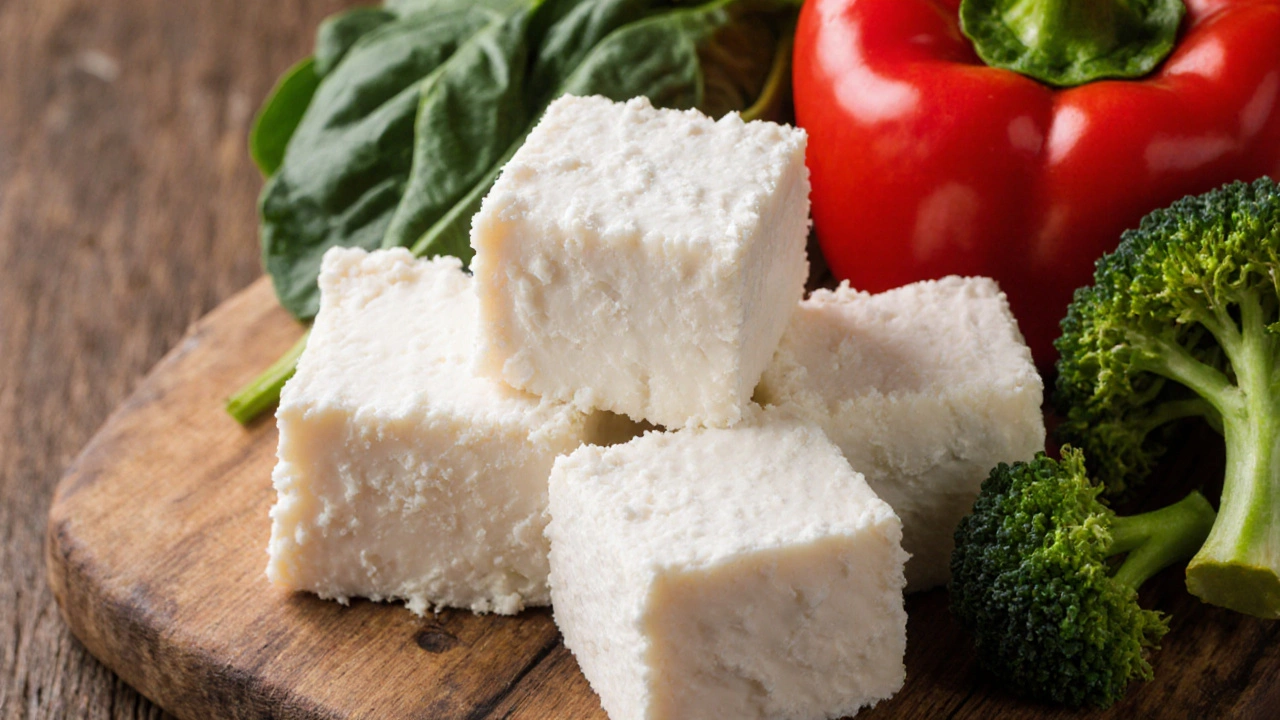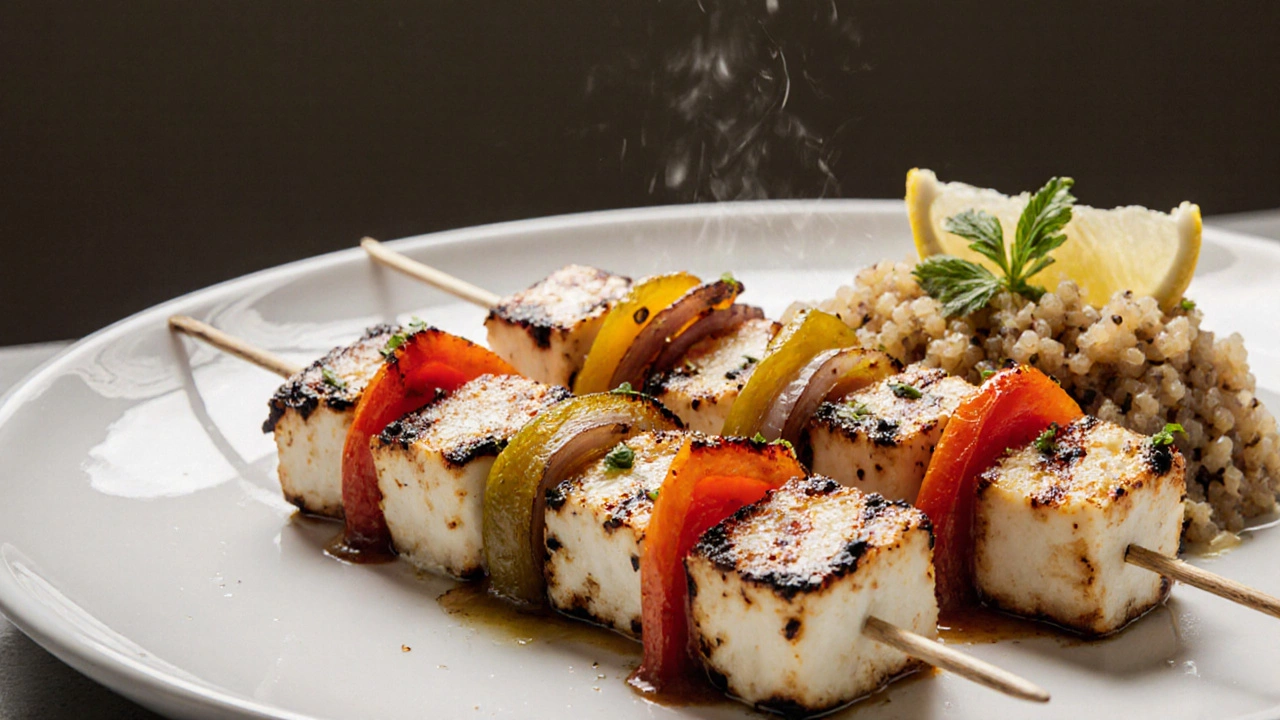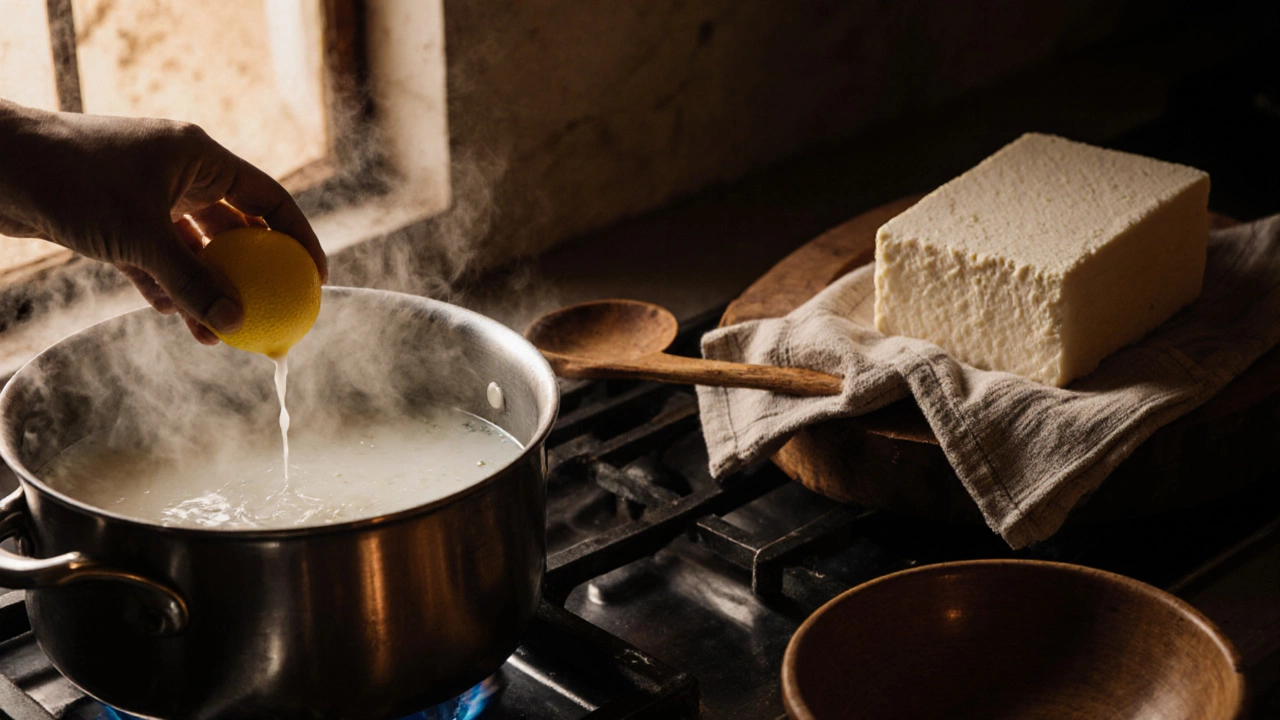Paneer Health Calculator
Enter your paneer preferences and click "Analyze" to see its nutritional profile and health implications.
Key Takeaways
- Paneer is rich in protein and calcium, making it a solid choice for bone health and muscle maintenance.
- Its saturated‑fat content can raise cholesterol if eaten in large portions or if you choose full‑fat varieties.
- People who are lactose‑intolerant may still tolerate paneer because most of the lactose is removed during curdling.
- Moderate portions (50‑100g) combined with low‑fat cooking methods keep paneer a heart‑friendly protein.
- When compared with tofu or Greek yogurt, paneer offers a unique blend of dairy‑based protein and calcium, but it’s higher in calories.
What Is Paneer?
Paneer is a fresh, non‑aged cheese common in Indian cuisine. It’s made by heating milk, adding an acid such as lemon juice or vinegar, and then separating the curds from the whey. The curds are pressed into a block and cut into cubes. Because it doesn’t melt like mozzarella, paneer stays firm when cooked, which is why it appears in everything from curries to grilled kebabs.
Nutrient Profile of Paneer
Understanding the numbers helps you decide how paneer fits into your daily diet. Below is a typical 100‑gram serving of full‑fat paneer (about 3.5oz):
- Protein: 18g - essential for muscle repair and satiety.
- Calcium: 208mg (≈21% of the RDI) - supports bone density.
- Saturated Fat: 9g - the main concern for heart health.
- Calories: 265kcal - a moderate energy source.
- Vitamin B12: 1.2µg (≈50% of the RDI) - important for nerve function.
- Lactose: ~1g - much lower than regular milk, making it tolerable for many lactose‑sensitive people.
Low‑fat paneer reduces the saturated‑fat number to about 4‑5g per 100g while keeping protein nearly the same.

Health Benefits of Paneer
When you line up the nutrients, a few clear advantages emerge:
- Muscle maintenance. The high‑quality protein provides all essential amino acids, which helps athletes and older adults preserve lean mass.
- Bone health. Calcium, paired with vitamin D‑rich foods, strengthens bones and can lower osteoporosis risk.
- Weight‑management aid. Protein drives satiety, so a modest paneer snack can curb cravings and reduce overall calorie intake.
- Probiotic potential. The curd‑forming process encourages beneficial bacteria. While paneer isn’t a fermented product like yogurt, the residual cultures may still support gut health for some individuals.
- Lactose friendliness. Most of the whey (which carries most lactose) is drained away, allowing many who avoid milk to enjoy paneer without discomfort.
Potential Drawbacks and Who Should Be Cautious
Paneer isn’t a universal superfood. Here’s where the risks lie:
- Heart disease risk. The saturated‑fat content can raise LDL cholesterol if consumed in excess, especially in people with existing high‑cholesterol conditions.
- Calorie density. At 265kcal per 100g, it’s easy to over‑eat, which may hinder weight‑loss goals.
- Sodium levels. Commercial paneer often contains added salt; high sodium can elevate blood pressure.
- Kidney concerns. The combination of high protein and calcium can strain kidneys in individuals with chronic kidney disease.
If you have any of these conditions, choose low‑fat, low‑salt paneer and keep portions modest (around 50g).
How to Include Paneer in a Healthy Diet
Practical tips keep the benefits while minimizing the downsides:
- Portion control. Aim for 50‑100g per meal. That’s roughly one to two small cubes.
- Choose low‑fat varieties. Many dairies now sell 2% or skim paneer; the protein stays high, fat drops.
- Cook with minimal oil. Grill, bake, or stir‑fry with a splash of olive oil instead of deep‑frying.
- Add veggies. Pair paneer with fiber‑rich vegetables like bell peppers, spinach, or broccoli to balance calories and improve digestion.
- Season smartly. Use herbs, lemon juice, and spices instead of extra salt.
- Swap in meals. Replace higher‑fat meats with paneer in curries, wraps, or salads for a protein boost without the saturated‑fat spike.

Paneer vs. Other Plant‑Based Proteins
For readers who wonder whether paneer is the best choice, a quick side‑by‑side comparison helps.
| Food | Protein | Calcium | Saturated Fat | Calories |
|---|---|---|---|---|
| Paneer (full‑fat) | 18g | 208mg | 9g | 265kcal |
| Tofu | 8g | 150mg | 1g | 76kcal |
| Greek Yogurt (plain, 2%) | 10g | 110mg | 2g | 97kcal |
If you need the highest protein punch, paneer wins. If you’re watching calories or saturated fat, tofu or Greek yogurt may suit you better. The right choice depends on your personal health goals.
Bottom Line: Good or Bad?
Paneer sits in a sweet spot: it delivers high‑quality protein and calcium, which are hard to find in many vegetarian foods. The main caveats are its saturated‑fat and calorie load. So, paneer isn’t inherently “bad,” but it isn’t a free‑pass either. Treat it like any other nutrient‑dense food-enjoy in moderation, pick lower‑fat versions, and balance it with plenty of vegetables and whole grains.
Frequently Asked Questions
Can lactose‑intolerant people eat paneer?
Yes, most paneer contains only about 1g of lactose per 100g because the whey (which holds most lactose) is drained away. Many lactose‑intolerant individuals tolerate it well, but if you’re highly sensitive, start with a small portion.
Is paneer suitable for a weight‑loss diet?
Absolutely, as long as you control portions and choose low‑fat paneer. Its protein keeps you full, which can reduce overall calorie intake. Pair it with fiber‑rich veggies to maximize satiety.
How does paneer compare to cheese from other cuisines?
Paneer is a fresh, non‑aged cheese, unlike cheddar or mozzarella which undergo fermentation and aging. This means paneer retains more whey, has a milder flavor, and doesn’t melt. Nutritionally, it is higher in protein than many soft cheeses but also higher in saturated fat than low‑fat cottage cheese.
What’s the best cooking method to keep paneer healthy?
Grilling, baking, or quick‑stir‑frying with just a teaspoon of olive oil are top choices. These methods lock in protein while limiting added fats. Avoid deep‑frying, which adds a lot of extra calories.
Does paneer contain probiotics?
Paneer isn’t a fermented product, so it has fewer live cultures than yogurt. However, the curd‑forming step does introduce some beneficial bacteria, offering modest probiotic benefits compared to fully cultured dairy.
